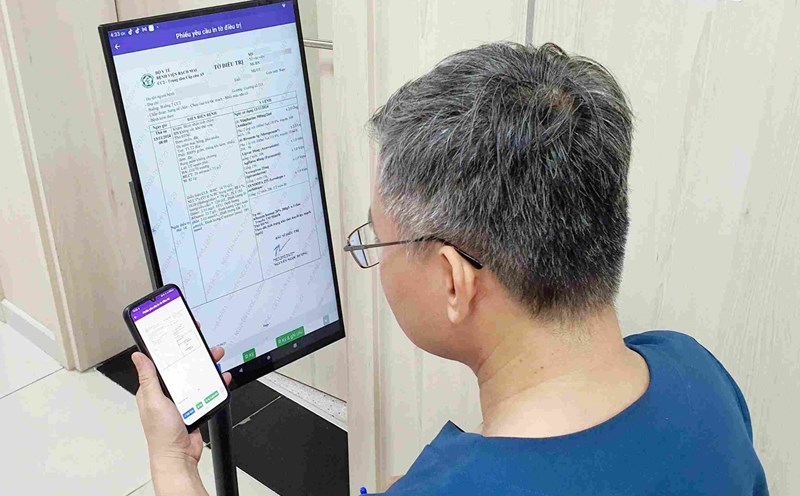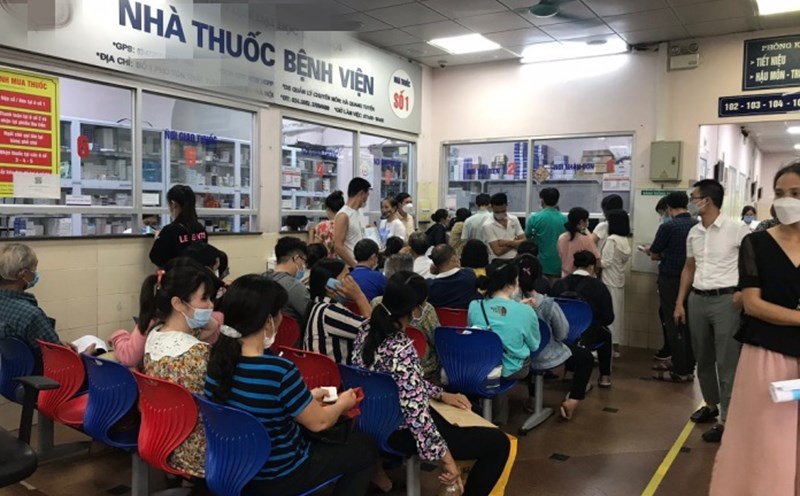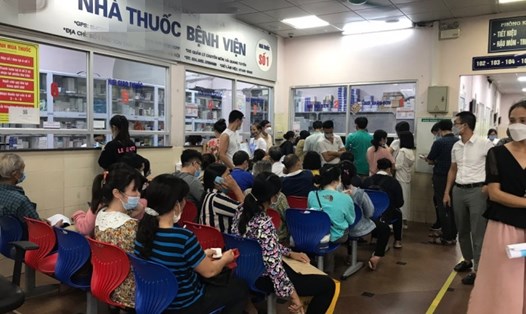Electronic prescriptions are a right step in the journey of digital transformation of healthcare. However, if not implemented synchronously, from the stage of prescribing - selling drugs - to monitoring and confirming, the effectiveness of this policy will still stop at the potential level.
In some major hospitals, electronic prescriptions have become familiar. Patients do not need to keep a paper prescription, the hospital's pharmacy receives the prescription via the system, and the data is connected to the national platform.
This is proof: technology can completely help prescriptions become a transparent tool, protect patients and improve treatment effectiveness.
However, the problem lies in the fact that this system is not really "closed". Electronic prescriptions are only strong in upper-level public hospitals, while the network of private pharmacies - where people often buy drugs - is a broken point.
The fact that a person holds a prescription code but cannot look it up at a pharmacy, or the pharmacy continues to sell drugs according to a paper prescription, reduces all the benefits of digitalization.
As a result, many goals of electronic prescriptions, such as controlling drug abuse, limiting slander, monitoring antibiotics and pharmaceuticals... have not been achieved as expected.
People can still reuse old prescriptions, share prescriptions with others, or buy non-prescription drugs from pharmacies that are not connected to the system.
It is worth mentioning that technologically, software connecting and confirming prescriptions is no longer a major barrier. The problem lies in the capacity to organize implementation and determination to implement, especially at private health facilities or small pharmacies.
The lack of specific instructions, no regular inspections, and especially no sanctions for failure to implement them have caused many places to choose to "stand outside" the game.
To change this situation, it is necessary to recognize that electronic prescriptions are not only a management tool, but a link in the digital healthcare ecosystem.
This linkage is only effective if there are: hospitals, pharmacies, management agencies and patients. And everyone must be connected, understand their role and be supported appropriately for transformation.
Regarding policies, instead of just encouraging, there needs to be a specific roadmap, publicizing the list of units that have not yet implemented, and thoroughly handling cases of intentional delays.
For pharmacies, confirming electronic prescriptions before selling prescription drugs needs to become a mandatory condition in licensing and re-licensing, similar to the regulations on facilities or pharmacists in charge of expertise.
On the other hand, localities, especially at the commune and ward levels, also need support in infrastructure, training and practical guidance.
It is not possible to expect a pharmacy in remote areas to build the system itself without technical support mechanisms or easy connection to the national platform. Some free software cannot replace a systematic digital transformation support strategy.
Finally, it is necessary to pay attention to the role of patients in monitoring drug use.
If people are provided with a prescription tracking application, warnings when there are multiple prescriptions, or feedback when detecting pharmacies selling incorrectly, the monitoring process will not only come from top to bottom but also be supported from bottom up, from the community using the service.
Electronic prescriptions are in the right direction. But to go right and go far, the whole system needs to move together, not let one stage go quickly, while the remaining stages remain unchanged.
Digital transformation, like electronic prescriptions, is only valuable when patients are truly benefiting, from convenience, transparency to safety in treatment.
And to make that happen, it is necessary to have synchronization between prescription, drug sales and supervision.











